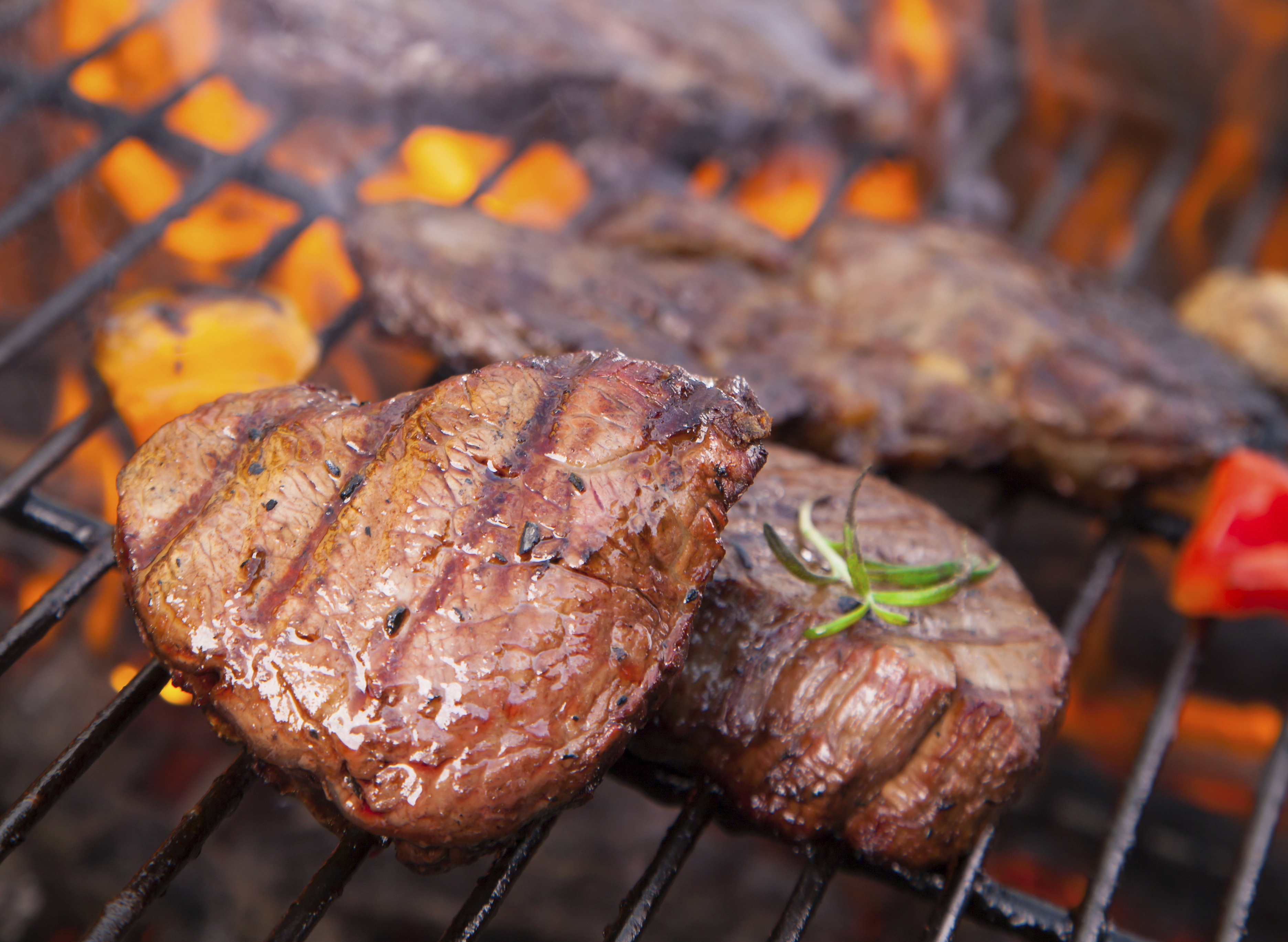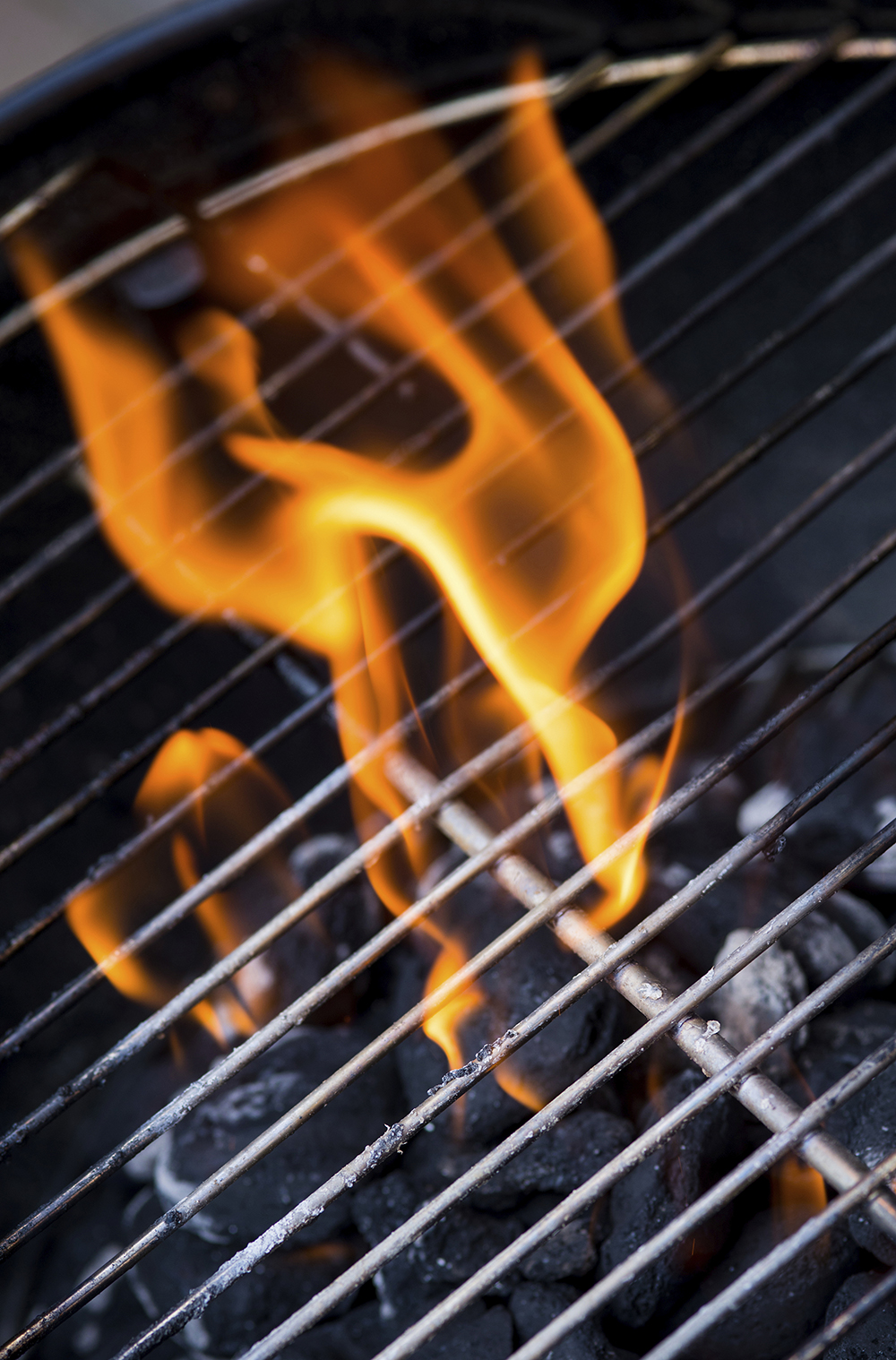Becoming a grill wizard: It's not magic, just knowledge
Wednesday, May 14, 2014
IF YOU GO• What: Beast Feast• Where: Chattanooga Market, First Tennessee Pavilion, 1829 Carter St.• When: 11 a.m.-4 p.m. Sunday.• Details: Nine barbecue pitmasters will be cooking on site -- Lockharts' Fire & Smoke, Porker's, Choo Choo, Little Billy's, Haute Cuisine, Owl's Nest, Cornerstone, Ms. Tee's and Chattytown.• Admission: Free to attend; each pitmaster will offer $2 Bar-B-Que bites all day long or market-goers can purchase a full plate of their favorite for an additional charge from individual pitmasters.• Information: beastfeastbbq.comGRILL WIZARD TIPSJade Lockhart, owner of Fire & Smoke Catering in Chattanooga, offers these tips for grilling different types of meat:ChickenChicken that has bones and skin stays moist, but takes a little longer to cook. Thighs have the most flavor and won't dry out quickly on the grill compared to a boneless, skinless breast. Before cooking, make sure to season under the skin as well as on top since the seasoning will not penetrate the skin. Always cook chicken well done, 165-170 degrees. Put any sauce or glaze on towards the end of cooking time so it doesn't burn. Brining chicken before cooking also helps keep it moist; usually brines are water, salt and sugar.PorkThe biggest misconception is pork has to be cooked well done -- it does not! Lean cuts such as pork loin will get terribly dry if you cook them to a well-done temperature, which is considered to be 160 degrees. For chops, loin and tenderloin, 145 degrees is totally acceptable. The next time you grill pork, try a pork tenderloin (much smaller than a pork loin); it's like the filet mignon of pork. Marinate it or season it to your liking and grill it; I like to rub mine in olive oil, garlic and rosemary. Take it off the heat at about 135 to 140 degrees, cover with foil tightly for 5 to 10 minutes while it rests, then slice it into two-inch pieces. You will be amazed.SteaksUse a good cut of meat, my favorite is a ribeye due to the marbling content. Pick your seasoning, either a wet marinade or dry sprinkle or rub. Use a HOT grill; you should not be able to hold your hand over the fire/coals for more than two seconds. Don't overcook your steak, it will dry out. Don't flip it a lot; leave it alone.BurgersAlways use 80/20 ground chuck; it has enough fat content to be moist but not so fatty that it shrinks too much. Don't overwork meat when you're patting it out. Season the burger generously, not lightly. Keep the patty cold before it goes on the grill; it stays together better. Once it's on the grill, try to leave it alone; don't flip it a lot. If you want a burger well done, take it off grill when the internal temperature is 155 to 160 degrees.In a sidenote, food scientists say you probably should serve your burgers well done because E. coli bacteria is killed at 155 degrees. On solid-muscle pieces of meat like steak, chops and chicken, the bacteria is on the outside, but with ground meat, as you mash the meat to make patties, the bacteria can be distributed throughout.Other tipsFamous Dave's, a national barbecue chain with a location on Gunbarrel Road, offers these general tips for grilling:• Pick the protein: While selecting your meats, examine the color. Beefs should be bright red and pork should be a deep pink. Take your meats into a natural light and out from under fluorescents to reveal the true color.• Layers of flavor: The best way to build flavor is to use a multitude of techniques. Marinade, season, smoke, char and finally, caramelize your sauce on the grill to build a complex, robust flavor profile.• Keep it simple: Sometimes all you need is salt and pepper, maybe just a little cayenne and granulated garlic for the perfect flavor profile. Don't be afraid to be simple, especially with a high-quality cut of meat.* Saucing: Wait until the meat is about 75 percent cooked and you have a good char base to start basting with sauce. Doing it too soon will burn your sauce. Add multiple thin layers of sauce and turn frequently.• Finish fresh: Add fresh chopped herbs and garlic into a bowl of oil with salt and pepper then brush it over your meat for a bright and flavorful addition. Use citrus if you're really adventurous.• Notes for next time: Grilling enthusiasts will tell you, the best tool you can have is a notebook and pen. Keep track of your sauces and seasonings, how you heat, the cuts of meat you use, how long it rests and use what works well to build upon in future grilling excursions.
Most of us know at least one - that person who can slap a piece of meat on the grill - any kind of meat, any kind of grill - and create a masterpiece of juicy, perfectly cooked flavor.
And, while we may hotfoot it over to that person's house any time we learn that the grill's being fired up, we also are kind of jealous and resentful. Why can't we turn our grill into a magical food device? Why can't we be grill wizards?
Well, there are steps that regular folks can take to up their grilling game. They're not complicated; you won't need a Ph.D. in physics to grasp them.
And, to be clear, we're talking about grilling here, not barbecuing. They're different techniques. Grilling is fast'n'hot, barbecue is low'n'slow.
One of the key tips from grillmasters is temperature, which covers several parts of the grilling process. It means the heat of the grill, the temperature of the meat when you place it on the grill and -- perhaps the most important one -- the internal temperature of meat when you take it off.
Let's start with the grill, though. Most meats liked to be grilled hot, especially steak, which demands a very hot grill to bring out the sizzle. Jade Lockhart, owner of Lockhart's Fire & Smoke Catering in Chattanooga, says that, for steak, you shouldn't be able to hold your hand over the grill for more than two seconds. That's a temperature of between 450 and 650 degrees and hotter can be better. High-end steak restaurants cook their meat at 750 degrees.
But be careful, grillers. Cooking over high heat means you must pay attention. Walk away to get a beer or check on something in the kitchen could mean the difference between juicy and bone-dry.
Now to the meat. In general, don't slap it on the grill cold; burgers are the only exception because they hold together better if they're still cold when you start cooking them. If you're dealing with beef, pork or chicken, though, take the piece of meat out of the fridge and let it warm up to room temperature before placing it on the grill. Otherwise, it might not cook evenly.
OK, the most important part -- internal temperature. It's critical that you know what the temperature of the meat is if you want to be precise about whether it's rare, medium rare or well done. And that means buying a meat thermometer; most grillmasters recommend the digital, instant-read kind. (Yeah, you could learn the "finger test," where you can tell how well a piece of meat is cooked by pushing down on it with your finger, but that takes lots and lots of trial-and-error practice and we're trying to make things easy.)
"Grilling without a thermometer is like driving without headlights; you are grilling in the dark,"says Brad Barrett, president of GrillGrate, a Cartersville, Ga.-based company that makes grilling equipment.
Meat thermometers are included in all grilling sets from GrillGrate, whose name comes from its patented aluminum inserts that are placed on top of the grill's original grate.
"A meat thermometer is handy," Lockhart agrees, but there's a small trick to using it.
"Your meat will continue to cook several degrees after being removed from grill," he says, "so take it off a little early to get your desired doneness."
Once you take the meat off the grill, resist the urge to slice into it immediately. Let it rest; it's had a big workout. Giving it about five minutes to catch its breath allows juices that have moved to the outside edges of the meat to sink back into the interior, giving you juicier bites.
Contact Shawn Ryan at sryan@timesfreepress.com or 423-757-6327.


